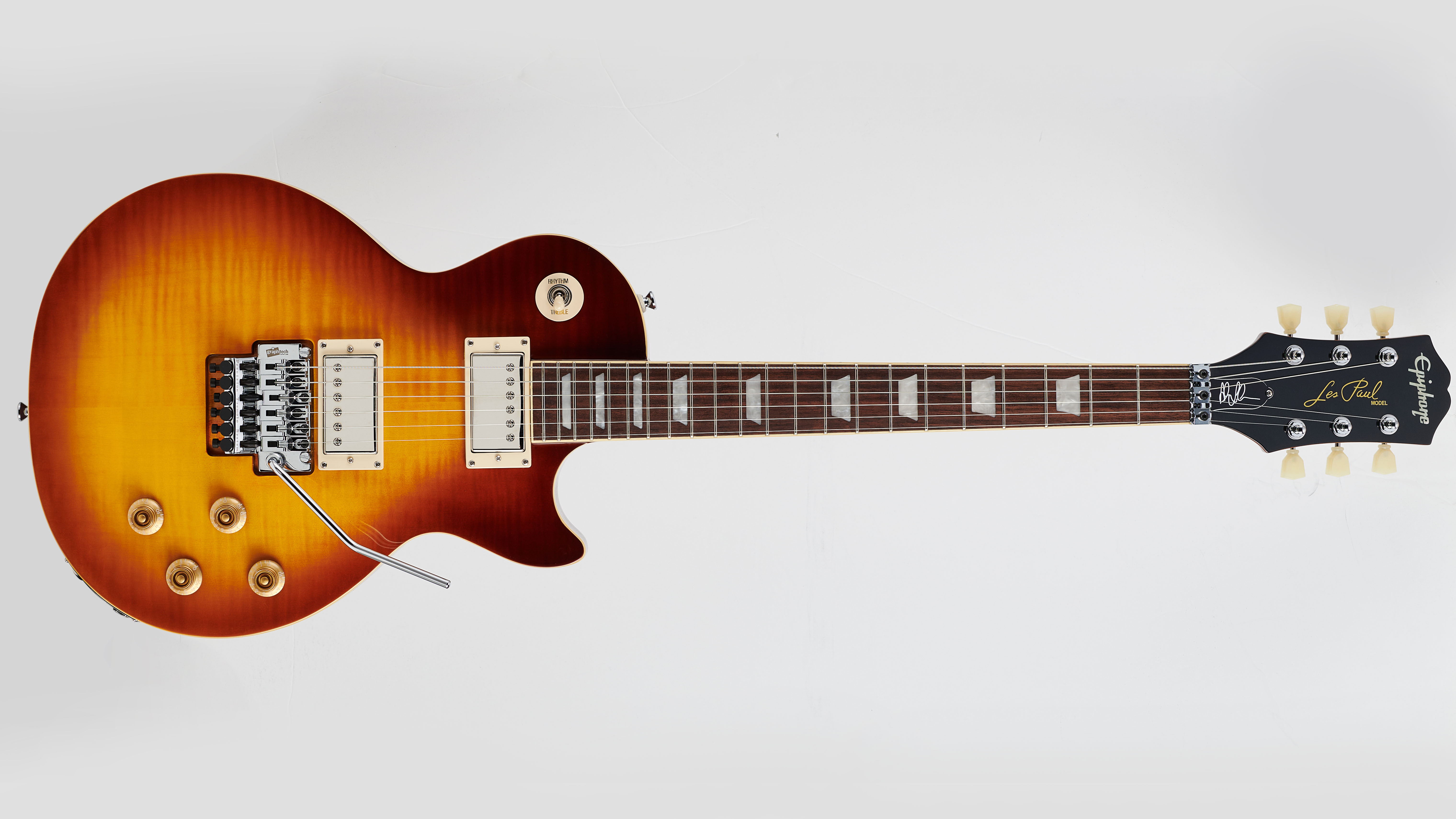MusicRadar Verdict
This is the most tonally versatile Les Paul around and the fact it's now part of the Epiphone catalogue at a more accessible price is great news for players who want to expand their tonal horizons.
Pros
- +
Expansive range of sounds
- +
A unique proposition for Epiphone and the Les Paul
- +
The double-locking tremolo allows new levels of expression and solid tuning stability
Cons
- -
The action on our test guitar was a little high
MusicRadar's got your back
What is it?
The Les Paul has appeared in pretty much every style of music at some point in its 69 year history; whether on stage or in the studio and beyond. It's one of the all-time classic electric guitar designs but far from OAP status. It continues to stand the tests of time but we wonder if its versatility is sometimes unsung.
We're talking about the range of sounds you can create with a Les Paul without touching an amp or effects pedal. With two sets of volume and tone controls, it's capable of wonderfully diverse tones. Want proof? Just check out Joe Bonamassa's demonstration below.
But what if you could take that versatility and turn it up to 11? Enter Rush legend Alex Lifeson, the Les Paul Axcess design and now Epiphone for a triumvirate of tonal possibilities.
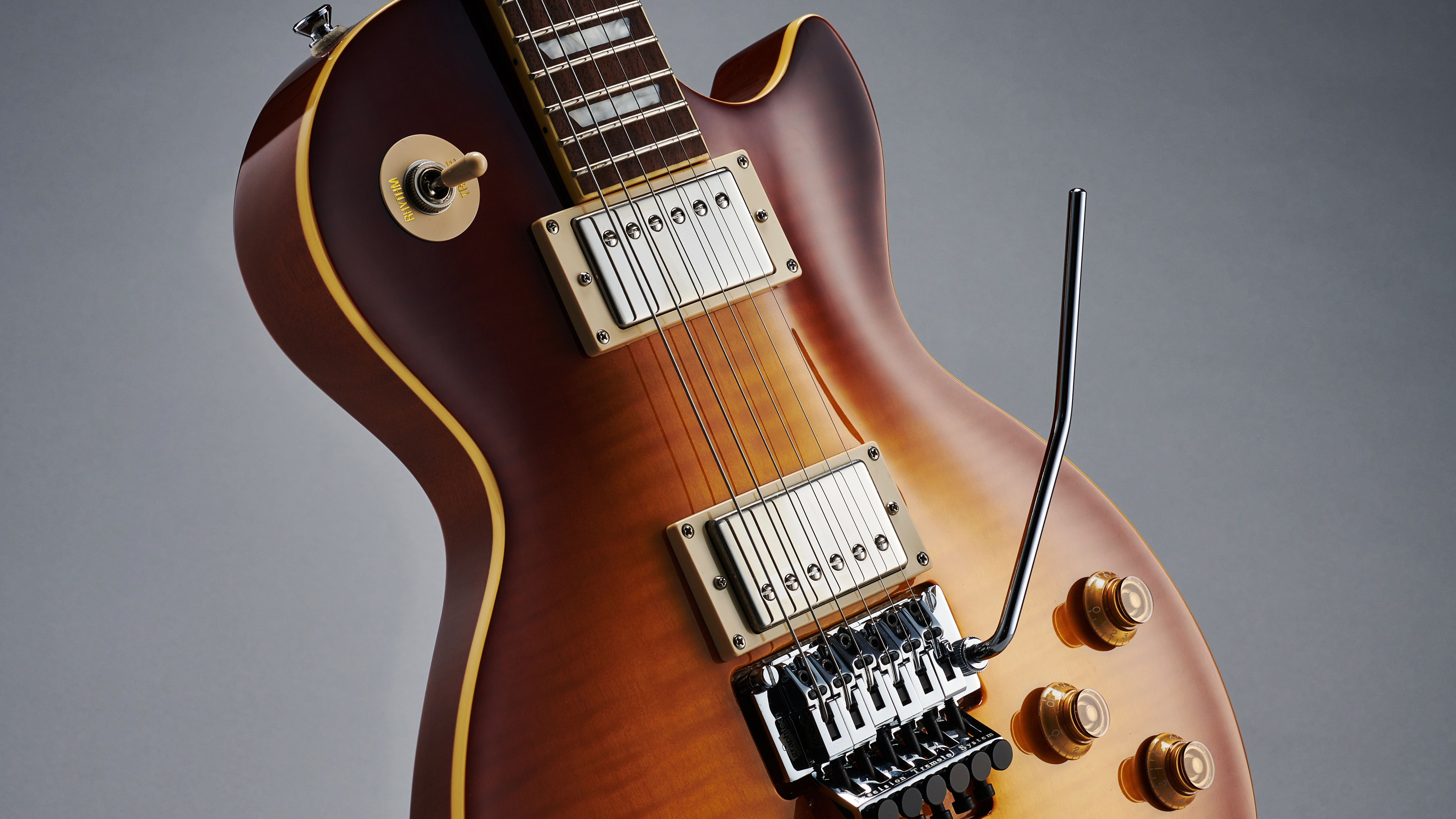
The Gibson Les Paul Axcess Standard launched in 2008 with a thinner body, enhanced upper fret access via its new neck joint design, ribcage rear body contouring and - gasp – a Floyd Rose double-locking tremolo.
The Lifeson signature version followed in 2011 – bringing another distinct take on an already pretty dramatic take on the LP blueprint. This writer spoke to Lifeson about it that same year while he was touring with Rush on the Time Machine tour.
“It’s based on the Axcess model with a thinner body but we went with a very heavy [non chambered] mahogany so it still has weight and resonance," Lifeson explained. "There’s a lot [of electronics] in the guitar so it was important to have a good solid block as a starting point."
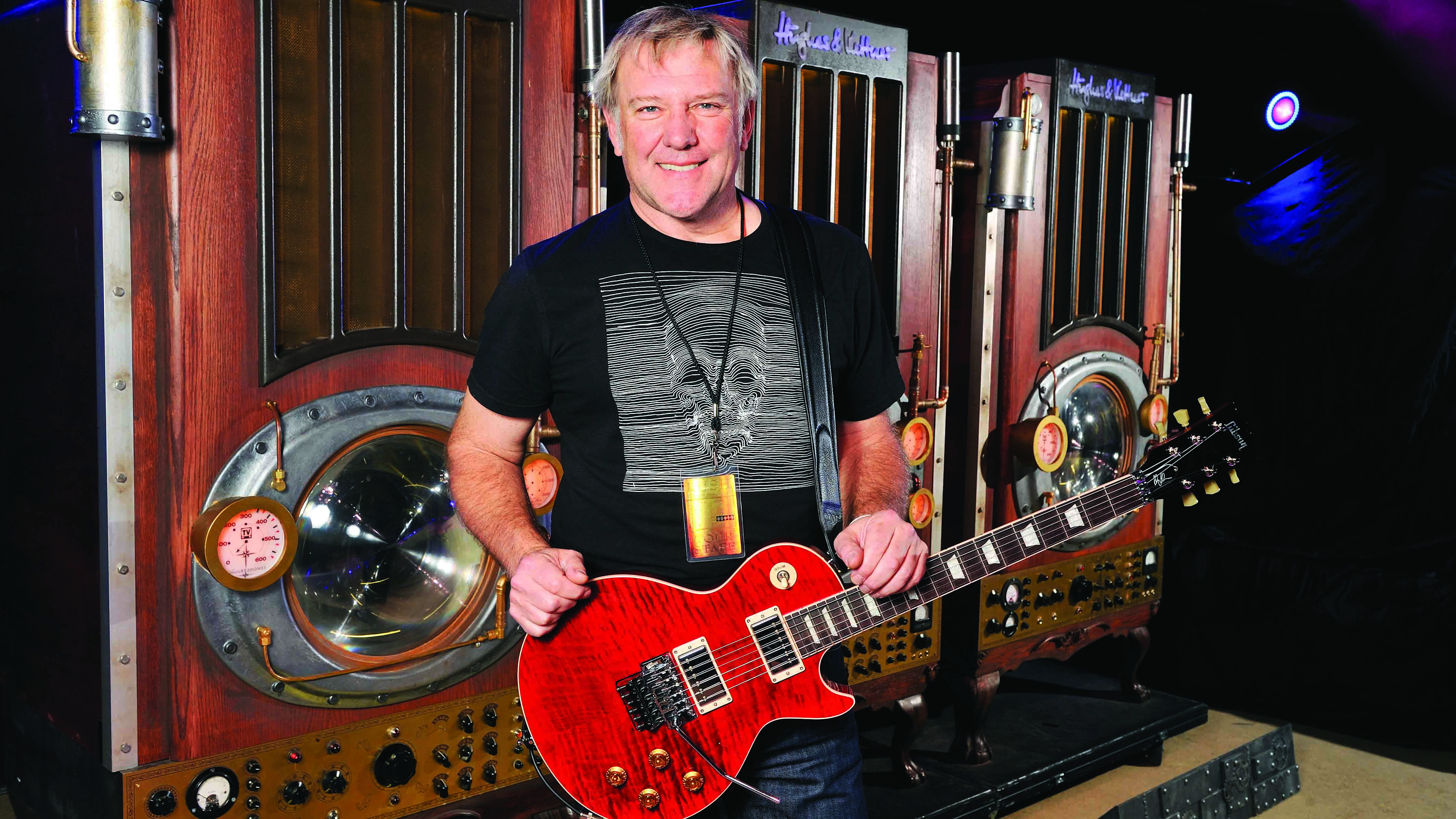
Now we could explain those but who better than the prog legend himself?
“We have coil taps on the pickups, a Floyd Rose and the piezo is the second jack - the Life-O-Sound - that we run independently or you can mix both magnetic pickups and the piezo through the main output.
“We’ve switched out the tone pot for a piezo volume pot to give control there," Lifeson continued, "and then the other tone control becomes a universal tone pot."
“Gibson did a nice job with the neck carve at the back because it’s always been a little difficult to get up high [on Les Pauls]. We really wanted to come up with a good utility guitar on a solid platform like the Les Paul. Gibson was great, and we went through a whole lot of different weight models and pickups.”
The Gibson Alex Lifeson Les Paul Axcess was a Custom Shop model with a price tag to reflect that. A decade on and the Epiphone version is here at an axcessible price (sorry); so how do all these intriguing features stack up alongside the tried and true familiarity of a Les Paul Standard? There's only one way to find out!

Performance and verdict
Visually, it's a beautiful Les Paul and a credit to Epiphone; Lifeson's Viceroy Brown preference proves a rich and palette of caramel and flame hues. Yes, the sight of a locking tremolo may prove jolting for some but we actually enjoy seeing one in a more traditional context, taking it away from the usual shred super-Strat connotations.
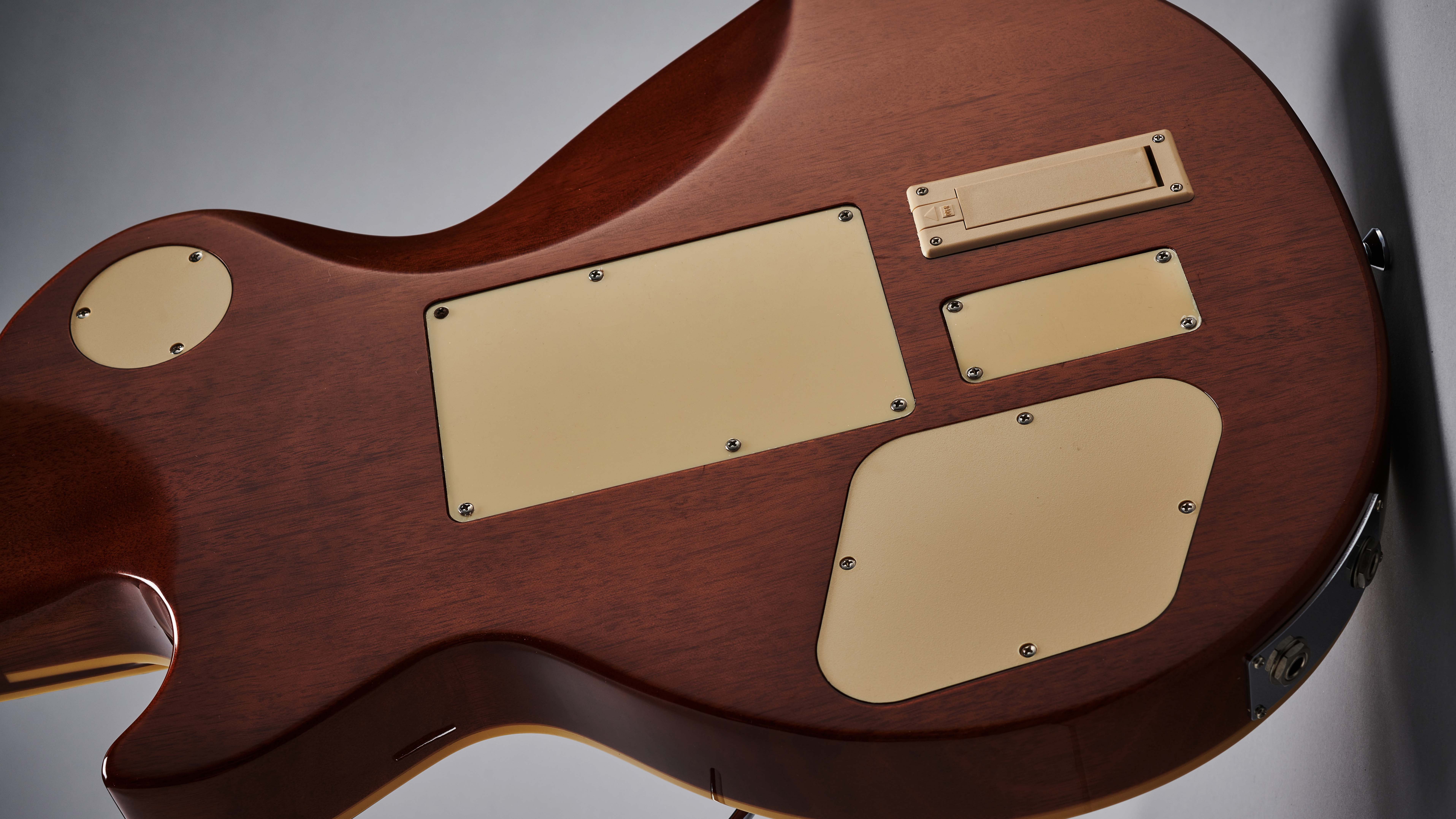
The ribcage / belly contour scarf is a welcome feature that helps you connect with this guitar
The thinner Les Paul Axcess body will be noticeable to anyone familiar with Les Paul Standards (here 1 and ¾-inches at its thickest compared to a Standard’s 1 and 7/8-inches) but for many players there will be more noticeable features when picking this up.
Our test guitar weighs nine pounds and though that's not a shock in the world of Les Pauls, you don't get the chambered weight reduction from a non-signature Standard Axcess model. But there's some real creature comforts to be found here that will help to offset the load; the ribcage / belly contour scarf is a welcome feature that helps you connect with this guitar. Playing guitar is a tactile thing as we all know, so these things matter and it's especially beneficial when holding the guitar close sitting down.
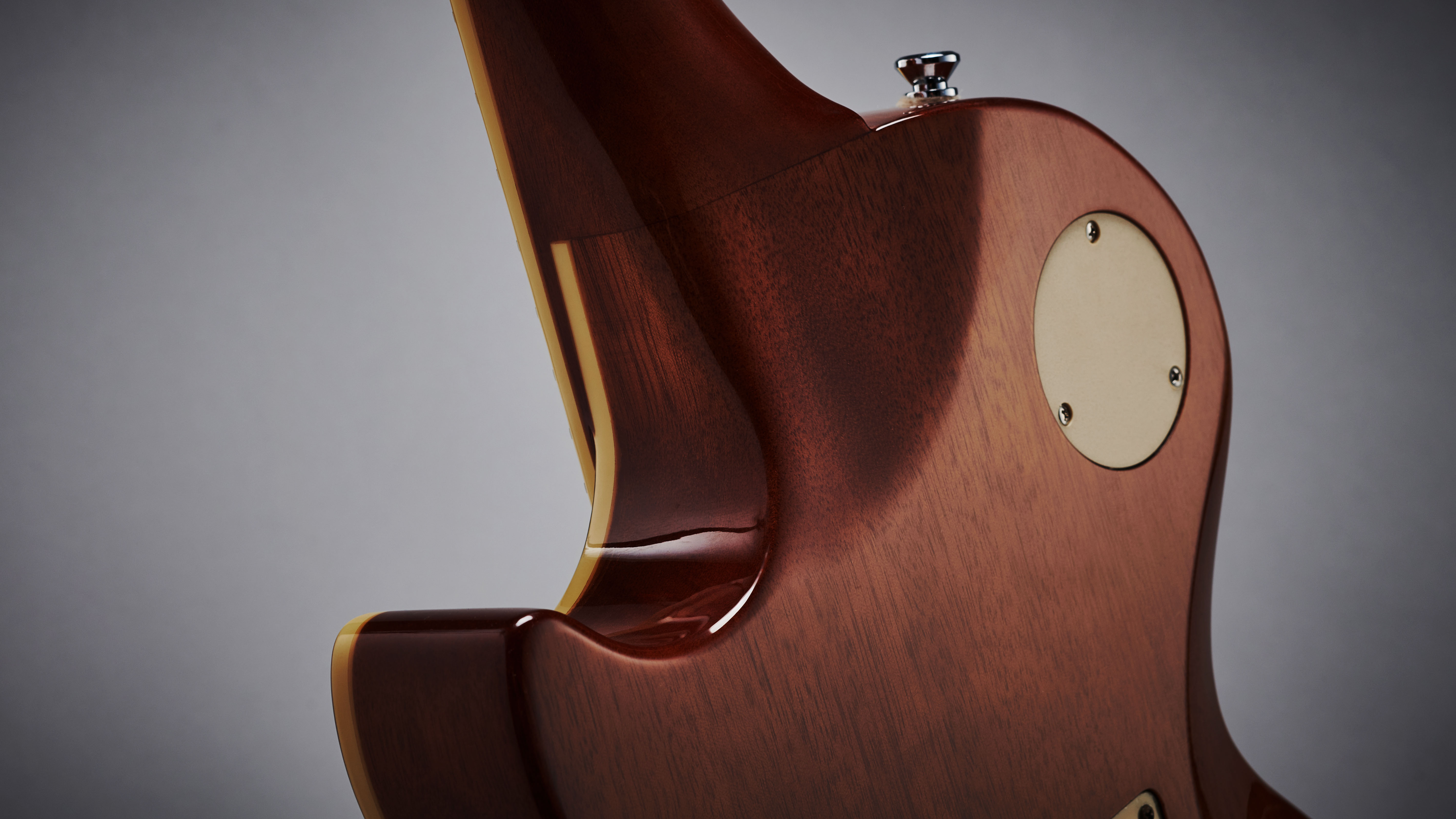
The contoured heel here matters too - reducing the mass for improved access and comfort when playing the upper frets. We'd like to see this feature on more Les Paul models in the future.

The neck shape is a 'Lifeson profile' and it equates to more of a SlimTaper D compared to the chunkier Epiphone 50s Les Paul Standard. A good all-rounder that we felt at home with. Many players (including us) prefer a satin finish to the gloss here but that's a very easy fix to rub down if required.
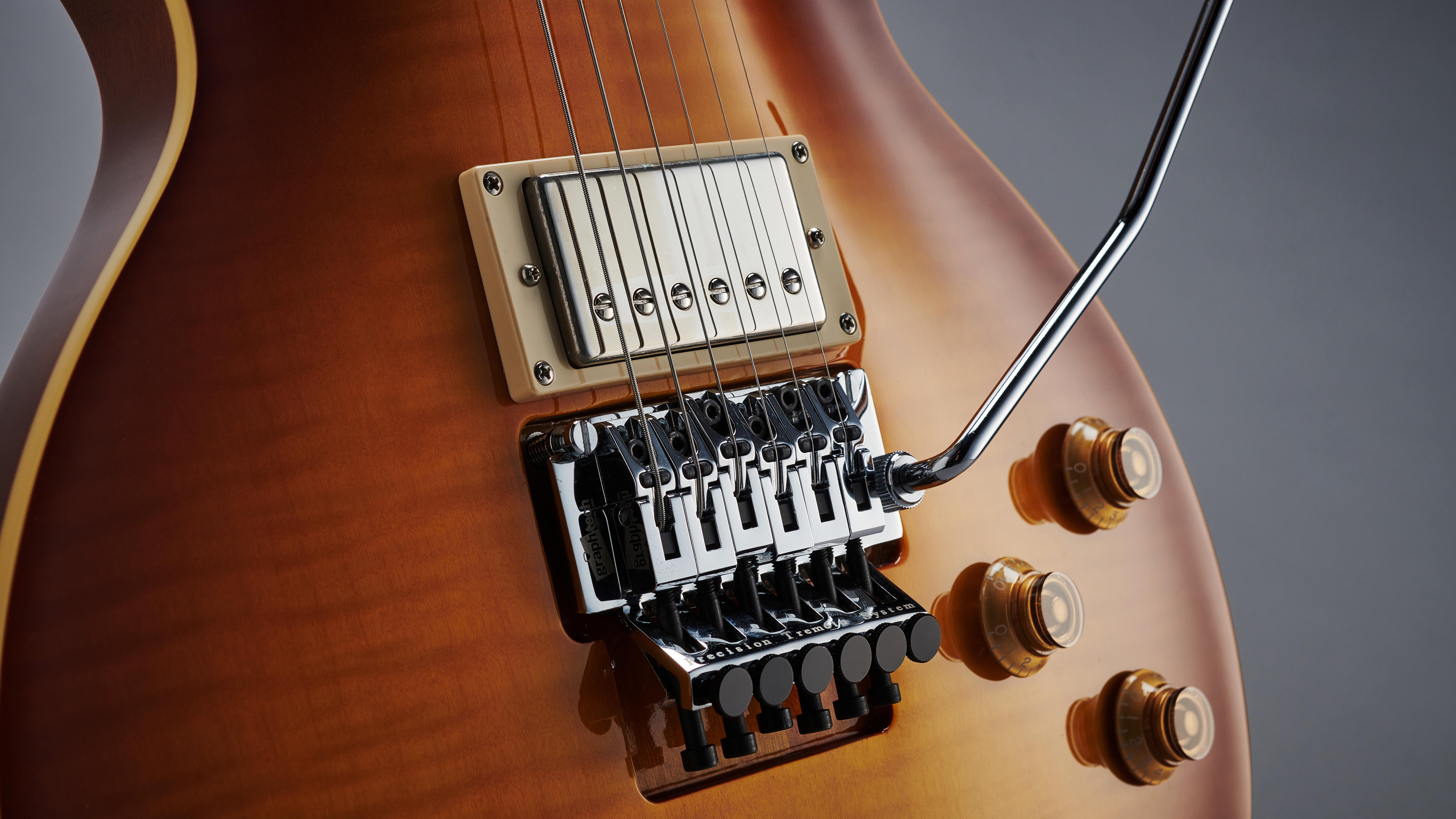
Approach this with an open mind and you may well find it's a lot of fun to experience this kind of tremolo system on a more affordable Les Paul
The Graph Tech Ghost Tremolo here is licensed from Floyd Rose (as all double-locking tremolos are) and paired with a Floyd Rose R4 locking nut. The less dramatic angle of the arm here feels more intuitive for subtler gestures than some Floyds we've tried and once we've followed the tuning protocol (tune with the machine heads with the locking nut off, then fine tune with the tuners at the bridge once you've relocked) it proves itself impressively stable.
This kind of tremolo can conjure image of the Sunset Strip, '80s pomp and divebombs but consider the player behind this feature and its context; a progressive, melodic and expressive force behind one of the greatest rock bands in history.
It's a door to new possibilities and we loved adding accents to chords, as well as dramatic pitches to leads, like Lifeson on his iconic Limelight solo above. Approach this with an open mind and you may well find it's a lot of fun to experience this kind of tremolo system on a more affordable Les Paul. It proves that the old Les Paul can still surprise with new tricks.
And we haven't even talked about the tones yet.
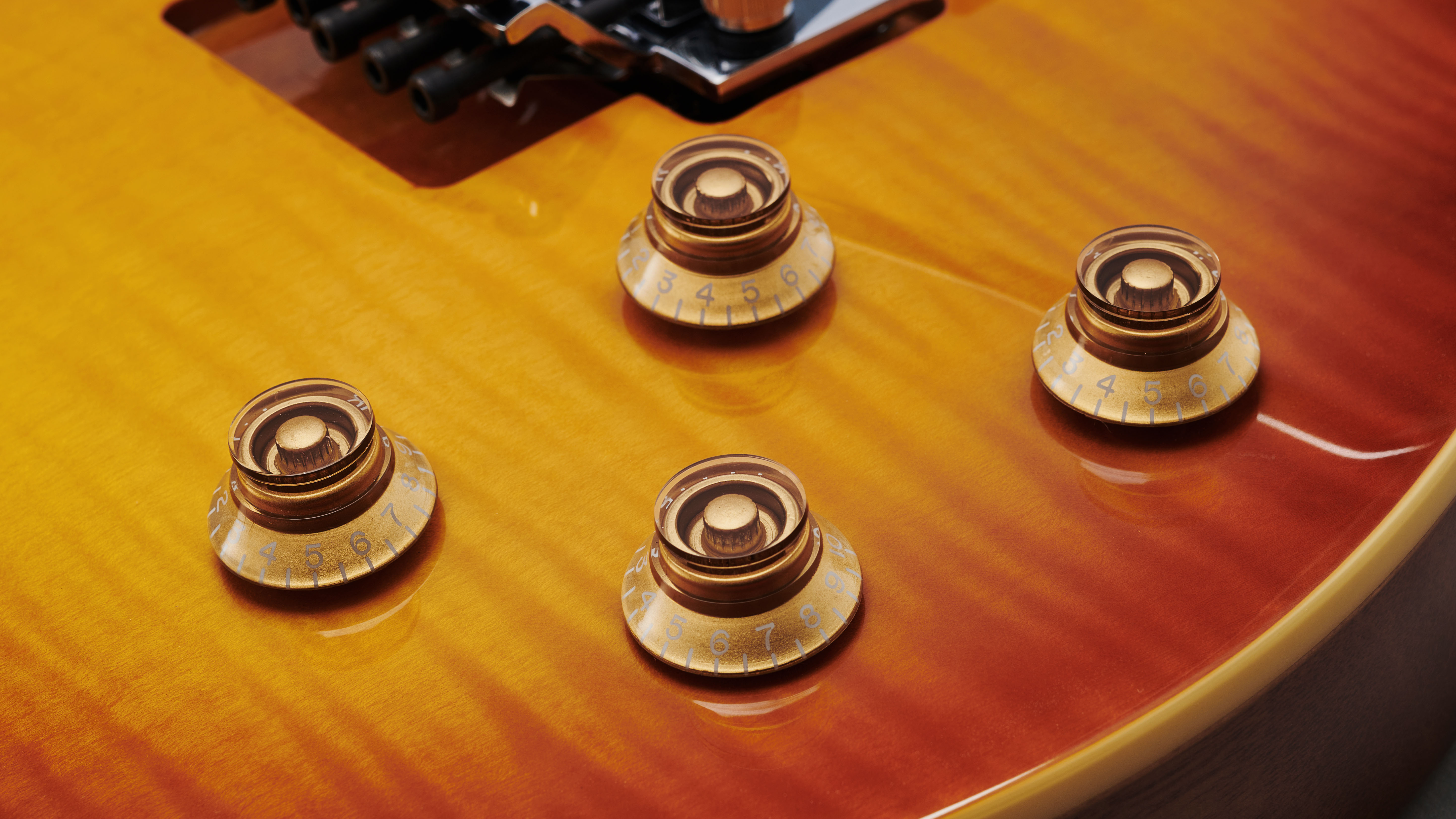
There's three push-pull pots here, and that calls for some rejigging of the established Les Paul norms. The volume pots serve as coil-split activation for the bridge and neck humbuckers, while the usual bridge pickup tone control is now the piezo volume and push/pull. That leaves the neck tone control; now a master tone.
It's obviously different but actually doesn't take long to get used to. The gold top hat knobs here are ridged for the push-pull control and though it's not as easy on the hand as other some designs we've encountered, it's an understandable compromise to keep the traditional facets of LP design that are core to the appeal here.
The action on our test guitar feels a little higher than we're used to though, especially considering the easy of access the neck feel design should allow. Thankfully that's something that can be addressed and set to players' tastes at home or with your local repair shop.
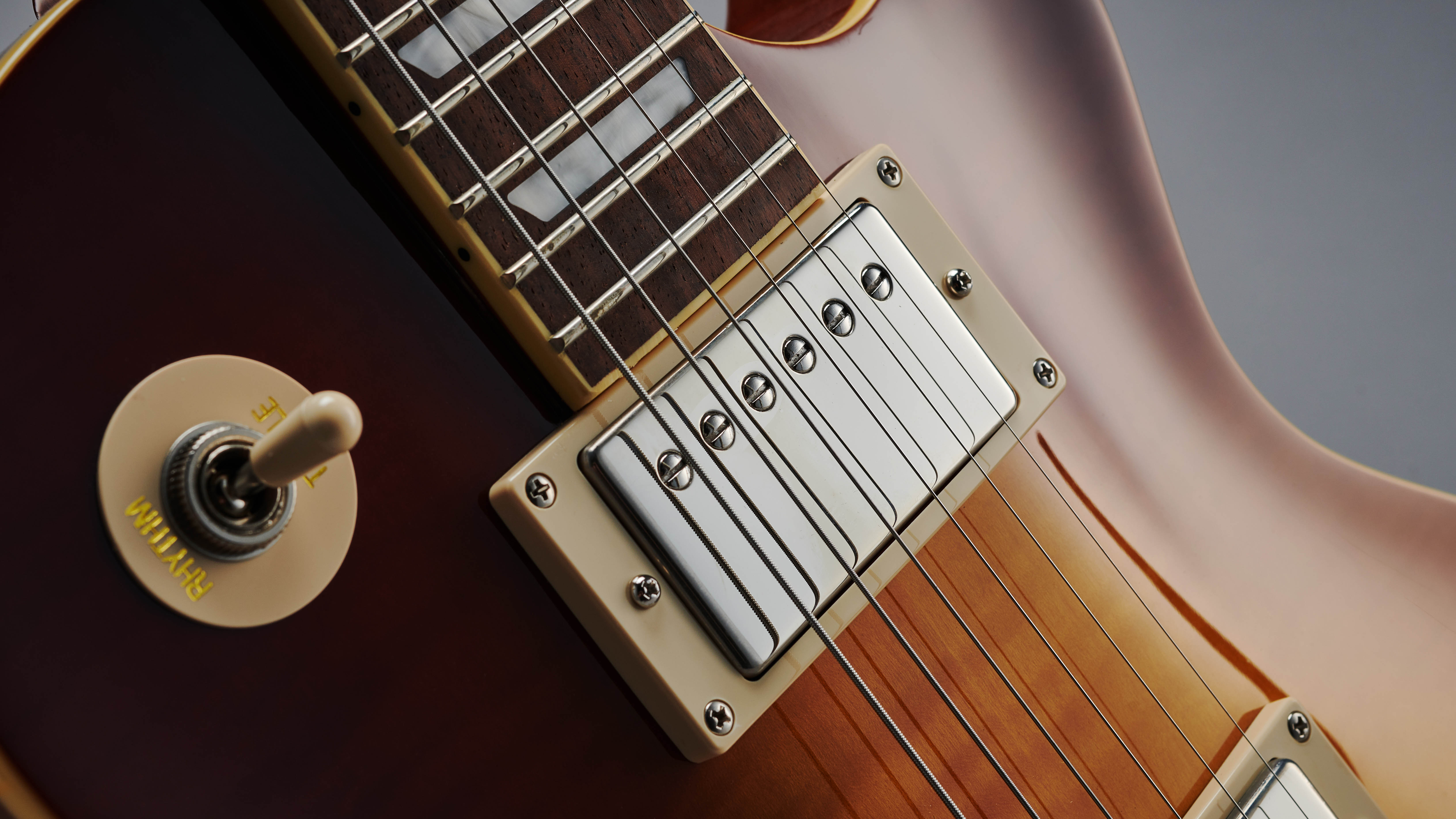
The tonal foundations of an Epiphone Ceramic Pro neck humbucker and alnico 2 ProBucker 3 in the bridge are a wise pairing and provide a great showcase of LP strengths. The Ceramic Pro offers a tight and defined low end to our ears - no muddiness here. Singing, throaty leads and fat rhythms abound.
Like the Ceramic Pro, the ProBucker 3 reflects the singing sustain this guitar provides. The latter is slightly overwound to complement the neck but it's relative heat doesn't hide the versatility of PAF-inspiration here. And it actually makes the coil-splitting less abrupt and much more of a seamless voice to engage.

There's just so many options at your fingertips
Coil-splits cut low end by their very nature and here it allows a more chiming midrange to emerge with some modern P-90-esque cut in the highs. There's some interesting clean metallic character to be explored with the tremolo too. The mid position is great for strumming rhythms and we love the ability to use the volumes and master tone to shape our tone without touching the amp. There's just so many options at your fingertips.
While it doesn't clean up as effectively as the 50s wiring we wish Epiphone and Gibson would offer more as standard, there's huge range of ground you can cover here. Even more so when the piezo is factored in…
The Graph Tech Ghost Tremolo bridge is the same design that appeared on the Gibson model and also hosts the piezo bridge saddles – rather than a single piezo pickup positioned under the saddle like an acoustic guitar, here each string saddle is a piezo pickup.
You can approach it in different ways; dialled in or out with the magnetic pickups, the piezo tone feels like it adds more space between notes. You can engage it with the push/pull at the setting your wish or roll it in or out as desired. Things can get overloaded if you crank with the humbuckers but carefully combined with the coil-splits and it's an earthier tonality with some boosted low end.
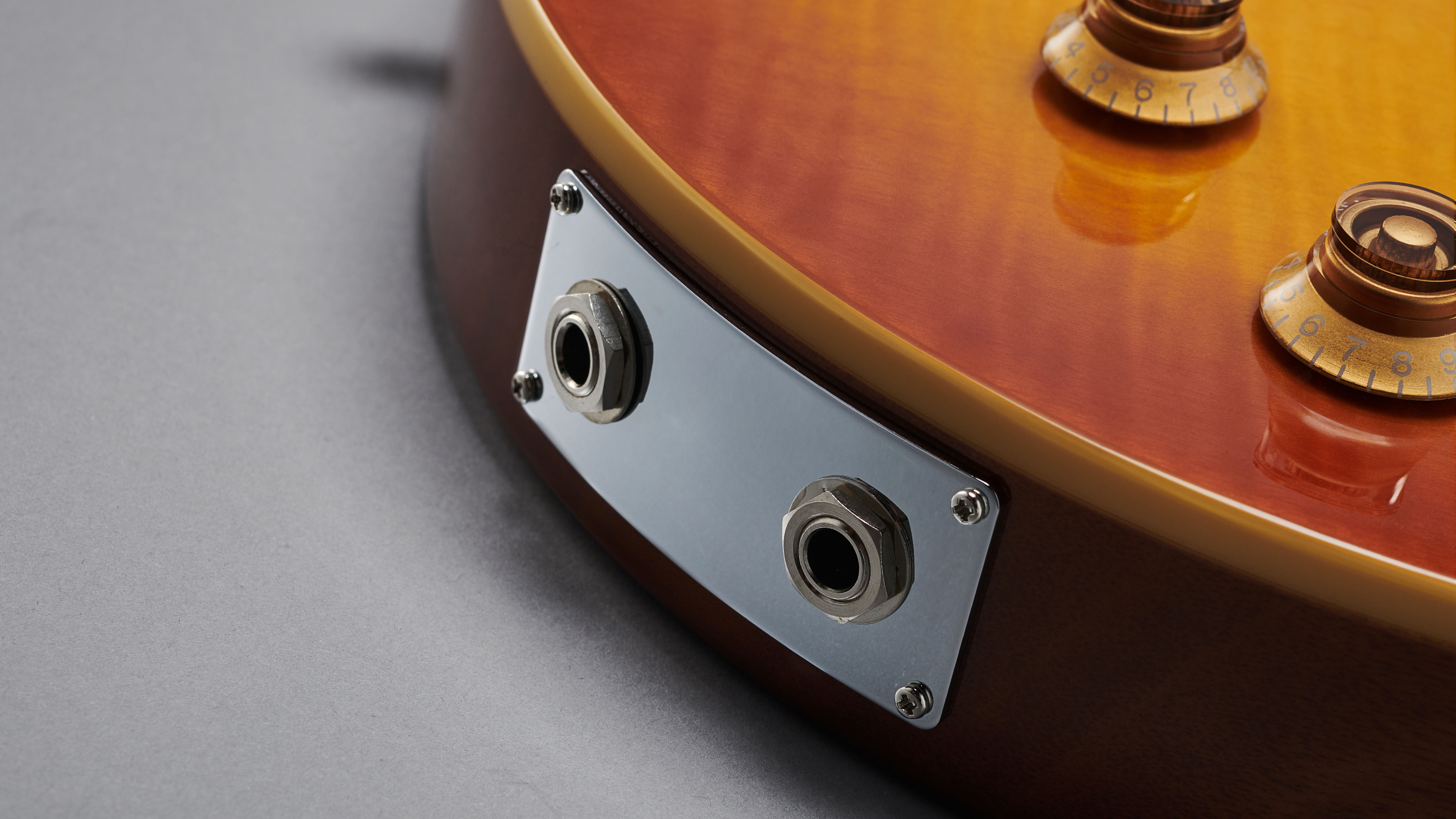
Used solo through a full frequency response acoustic combo or PA and you have some convincing electro-acoustic guitar tones - the fact the guitar has a separate 'Life-O-Sound' piezo output just for this expands the scope even wider. Send acoustic tones through the PA and humbucker sounds to your amp for layering live? Why not!
With four pickup voices even before you engage the piezo, plus all the nuances of the volume and tone controls, the amount of combinations here are immense and enhance the value here. This is a lot of guitar, delivered in a very impressive outfit.
MusicRadar verdict: This is the most tonally versatile Les Paul around and the fact it's now part of the Epiphone catalogue at a more accessible price is great news for players who want to expand their tonal horizons.
- BODY Carved Maple with AAA Flame Maple veneer
- NECK Mahogany
- SCALE 628mm (24.7")
- FINGERBOARD Indian Laurel
- FRETS 22
- PICKUPS Epiphone ProBucker 3 (bridge), Epiphone Ceramic Pro (neck)
- CONTROLS Neck Volume, Bridge Volume (each with push/pull coil split), Piezo
- Volume with push/pull on/off, Master Tone
- HARDWARE Floyd Rose R4 locking nut, Graph Tech Ghost Tremolo w/ piezo saddles, Epiphone Deluxe tuners with Keystone buttons
- LEFT-HANDED No
- FINISH Viceroy Brown
- CASE EpiLite
- CONTACT Epiphone.com
MusicRadar is the number one website for music-makers of all kinds, be they guitarists, drummers, keyboard players, DJs or producers...
- GEAR: We help musicians find the best gear with top-ranking gear round-ups and high-quality, authoritative reviews by a wide team of highly experienced experts.
- TIPS: We also provide tuition, from bite-sized tips to advanced work-outs and guidance from recognised musicians and stars.
- STARS: We talk to musicians and stars about their creative processes, and the nuts and bolts of their gear and technique. We give fans an insight into the craft of music-making that no other music website can.
“For those on the hunt for a great quality 12-string electro-acoustic that won’t break the bank, it's a no-brainer”: Martin X Series Remastered D-X2E Brazilian 12-String review
“I have that on more records than anything else”: Take a peek inside Vaughn Oliver’s studio
“Wendy Carlos is able to build precisely the sound that she wants”: Watch synth pioneer Wendy Carlos in the studio, working Moog magic back in 1989
